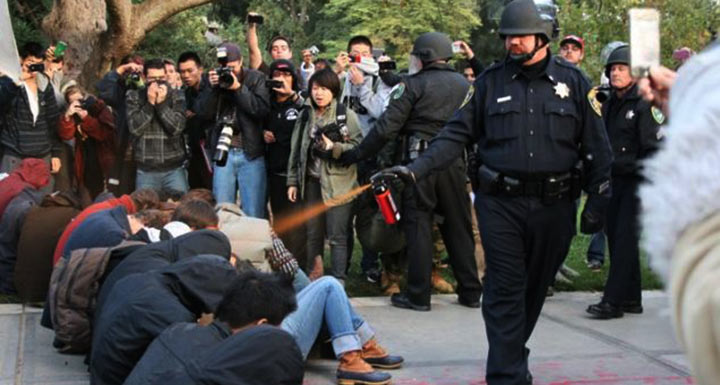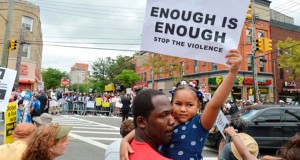
New technology monitors abusive cops
NEW YORK — The deaths of Michael Brown in Ferguson and Eric Garner in New York at the hands of the police stirred an awareness in people that a ferocious wave of police brutality afflicts the country and that immediate measures are needed to contain it. Because, even though these are the most talked-about cases, they are far from being the only ones.
In New York, distrust of the authorities has reached such a point that it’s difficult to decide if “Courtesy, professionalism and respect” — the city police motto — is a mockery or a tasteless joke.
 Here, where the excessive use of force seems to have ceased being the exception to become the rule, things may have started to change, thanks to the citizenry’s efforts.
Here, where the excessive use of force seems to have ceased being the exception to become the rule, things may have started to change, thanks to the citizenry’s efforts.
Tired of putting up with the abuse, the people — blacks, Latinos, the poor, the workers, the immigrants — are taking steps to combat it. Beyond the marches and demonstrations demanding punishment for the officers guilty of the death of the two African-Americans, those measures focus on utilizing technology to monitor police abuse.
What compels people to participate in these activities — which undoubtedly carry the risk of violent reprisals from the men in uniform — is that they know, from their own experience, that the police are not there to protect them but to make them toe the line. Which is why they have to find ways to defend themselves from official repression.
“Contrary to popular perception, police violence has always been present,” says Daniel ‘Majesty’ Sánchez, a member of Committee for Justice, a group founded by Latinos to combat the authorities’ abuse.
“What’s happening is that today’s technology reveals it. Now we learn of more cases because there’s video evidence, recorded by ordinary New Yorkers.”
Sánchez, a hip-hop artist, is an instructor in Cop Watch, a program implemented by Committee for Justice to teach New Yorkers how to use video cameras to observe, document and expose the police’s illegal actions.
A Brooklyn group, El Grito de Sunset Park, also focuses on documenting police misbehavior. Recently, it made public two videos, recorded the same week, that, because of their shocking brutality, provoked great indignation.
One video shows a policeman kicking Jonathan Daza, a 22-year-old street vendor, on the back as he lies, handcuffed, on the ground. The second video captures another policeman violently knocking down Sandra Amézquita, a woman five months pregnant. Not satisfied with that act of savagery, the policeman pushes another woman with such force that she rolls several times on the street.
“The people are rightfully indignant,” says Dennis Flores, founder of El Grito. “This is the reality we live in Sunset Park.”
Flores, a well-known community activist, has asked Mayor Bill de Blasio to remove the captain of Police District 72 in Sunset Park, whom he blames for the abuse that prevails in the sector.
The efforts of Committee for Justice and El Grito de Sunset Park have not been in vain. The documentation of police brutality has began to have effect and the impunity the police once enjoyed is beginning to crack.
Last week, Police Commissioner William Bratton, responding to the growing number of videos that record brutal actions by his subordinates, met with 800 of his top officers, to whom he showed the videos of the abuses committed against Daza and Amézquita, among others. Afterward, he addressed them with harsh and clear words.
“We’re going to aggressively try to remove from the department those who shouldn’t be here,” Bratton said. “The brutal, corrupt, racist or incompetent cops have no place in the New York Police Department in 2014.”
Such words are seldom heard, which is why the people of the city — blacks, Latinos, workers and immigrants — welcome them cautiously, not to say skeptically. As Flores puts it:
“We’re not going to wait for the police to make changes. What’s important is that the community be united, that it be clear that the true force resides here, within us, within the people’s power.”
It is that power that can keep Bratton’s words from blowing in the wind.


